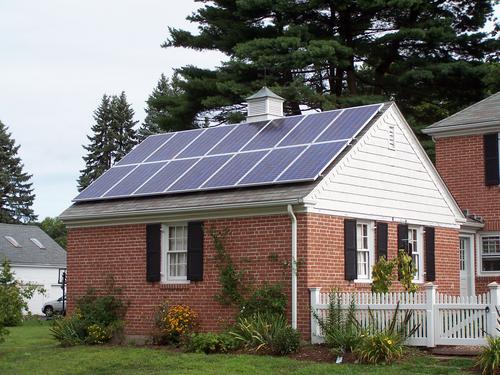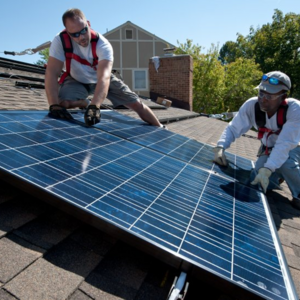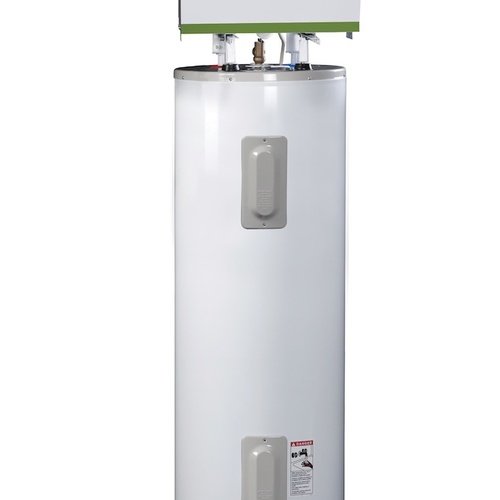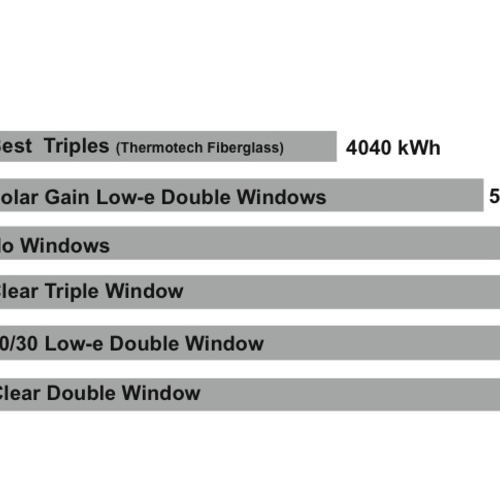
Image Credit: groSolar
I’ve been addressing tax credits for home energy improvements the past few weeks. This week, we’ll look at what’s available for solar energy systems.
Through the American Recovery and Reinvestment Act of 2009, a 30% tax credit was created for a wide range of measures, including insulation, window replacement, and heating system upgrades (see January 26, 2010 column). Most of the home energy tax credits are capped at $1,500 and expire at the end of 2010. With solar energy systems and a few other measures, though, there is no cap on the dollar amount, and the program is scheduled to remain in place until the end of 2016.
The 30% solar tax credit covers both solar water heating and photovoltaic (solar electric) systems. The tax credit can be earned for systems installed on new or existing homes, including second homes, but rental properties do not qualify. The tax credit is paid on the total cost, including both the equipment and installation. Specifics related to solar water heating and photovoltaic (PV) systems are described below.
Solar water heating systems
To qualify, a solar water heating system must be certified by the Solar Rating and Certification Corporation (SRCC) or a comparable entity endorsed by the state in which the property is located. This provides an important level of assurance that the system will work effectively. The requirement will go a long way toward avoiding the problems that occurred with the solar tax credits in the 1970s, when poorly functioning systems gave a bad name to solar water heating. All solar water heaters that have earned Energy Star certification (products from about 20 manufacturers) satisfy the tax credit requirements, but the tax credit is not limited to Energy Star products.
The tax credit provisions do not dictate the type of solar water heater. Eligible systems include those with flat-plate collectors, evacuated-tube collectors, and “integral-collector-storage” or “batch” systems. Solar water heating systems for pools and hot tubs do not qualify.
Photovoltaic (PV) systems
To qualify for the tax credit, PV systems have to meet applicable fire and electrical codes, but an independent certification of performance of the system is not required, as it is with solar water heating systems. I wish independent certification of PV systems were required, as I fear that poorly functioning systems could give the industry a black eye. This lack of oversight puts the onus on consumers to do the research on reliability and effectiveness of systems they are considering.
Take advantage of the solar tax credits while you can
The 30% tax credits for solar water heating and PV systems do not have a cap, and they are set to remain in place until the end of 2016. But I don’t expect these provisions to last very long. Here’s why:
First of all, the tax credits a really good deal, and as more homeowners become aware of it they’re going to take advantage of them. That will create work and stimulate the economy, which is good, but it will cost a lot, which is bad for the federal deficit. I’m predicting that we’ll shortly see a reining in of some of these costs, either limiting the maximum tax credit that can be received, or ending the opportunity well before 2016.
Second, I think the no-upper-limit tax credits for solar (and wind and ground-source heat pumps) will be seen as give-aways for the rich, and that won’t play well in the political world. If an investment banker spends $500,000 from his annual bonus for a huge PV system on a second home in Aspen, the rest of us tax payers will subsidize that installation to the tune of $150,000. Once a few high-profile news stories like this have made the rounds, I think legislators will decide to put a cap on the credit.
So, if you want to take advantage of the tax credits for solar water heating or PV, I’d recommend acting sooner rather than later.
To obtain the solar tax credits, use IRS form 5695. This IRS guidance bulletin is also useful. Consult with your accountant or tax attorney for specific information on compliance; information provided here is for general guidance only.
I invite you to share your comments on this blog. Is having no cap on the solar tax credits a good idea?
To keep up with my latest articles and musings, you can sign up for my Twitter feeds.
Weekly Newsletter
Get building science and energy efficiency advice, plus special offers, in your inbox.















0 Comments
Log in or create an account to post a comment.
Sign up Log in